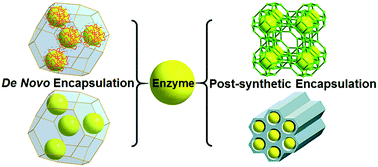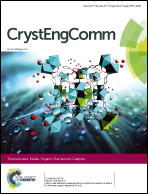Enzyme encapsulation in metal–organic frameworks for applications in catalysis
Abstract
Enzymes are natural catalysts which are highly selective and efficient. Given that enzymes have very intricate and delicate structures, they need to be stabilized and protected by a support material if they are to be used under challenging catalytic conditions. This highlight focuses on the use of metal–organic frameworks as supports for enzyme encapsulation and subsequent catalytic applications. De novo and post-synthetic methods of encapsulation are discussed and the relative catalytic activities of the enzyme@MOF composites versus free enzymes are highlighted.

- This article is part of the themed collections: Editor’s Collection: Bio-applications of MOFs, Editor’s Collection: Zirconium based MOFs for catalysis, 2017 Highlight article collection and Metal-Organic Framework Catalysis


 Please wait while we load your content...
Please wait while we load your content...